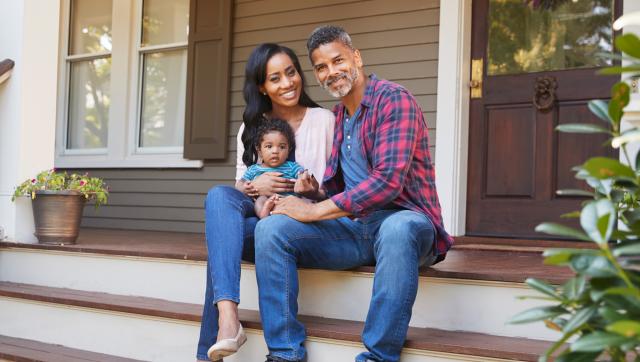Moira's Message: Addressing Affordable Housing

CINCINNATI (June 7, 2022) —
Dear United Way friends,
With record-setting sale and rent prices and record-low inventory, housing is a hot topic. Can you imagine living with a low income and trying to find stable housing for your family? It has always been a challenge, but even more so now.
Affordable and stable housing is a building block to financial stability and economic mobility. Our interviews and surveys of more than 400 individuals and 200 organizations identified housing and income as the top two community needs.
- 58% of participants shared not being satisfied with efforts to address the community challenges of income and housing.
- 10% of those surveyed stated the solutions to address housing availability/affordability are not working.
Families with low incomes across our region disproportionally pay more for housing and are often faced with low-quality, unsafe or crowded housing options. Locally, according to the U.S. Census Bureau, nearly 60% of all households making less than $50,000 a year spend more than 30% of their income on housing. As of 2017, Hamilton County alone had an estimated shortage of 40,000 affordable and available units for extremely low-income households, calculated in a report by LISC Greater Cincinnati & Northern Kentucky. COVID-19's impact on financial security and housing competition certainly makes it even more difficult for families to access affordable and stable housing.
We heard loud and clear from community members and partner organizations that housing challenges in our community are inextricably connected to economic well-being. As one community member shared: “We must address affordable housing – it may look different across the state, but it is still an issue. It’s foundational. It’s the center block to build upon.”
United Way is investing nearly $2.5 million with 15 Systems Change partners to develop housing solutions. While many innovations and efforts across the region are seeking to address affordable housing, they are often segmented by jurisdictional boundaries and may not fully consider the unique history or current conditions of the community. This group of partners can bring community voice to ensure solutions work in their neighborhoods and help build new solutions that leverage the existing assets and resources available to support affordable housing. For example, we know many families are unable to access public housing benefits because of the limited number of landlords that accept housing choice vouchers, a program funded by the US Department of Housing and Urban Development. Solutions that reduce the stigma around housing benefits and engage local landlords can accelerate regional efforts to improve affordable housing and improve the economic well-being of more families.
This work will make a difference where it matters in families’ lives. Neighborhoods play a key role in shaping the trajectory of an individual’s life. A person’s community impacts their future earnings, their likelihood of attending college, their lifelong health and even their involvement in the criminal justice system.
Building solutions and aligning systems to ensure more families can access affordable and stable housing requires systems change. The inequities brought about through historical structural discrimination in housing, such as restrictive covenants and redlining, combined with modern-day issues, continue to produce inequitable housing and economic well-being outcomes across our region. For example:
The homeownership gap between white and Black households grew in 2020. Although homeownership rates rose to 65.5% nationally, rates for Black Americans increased to only 43.3%, a rate lower than in 2010. Conversely, white Americans (72.1%), Asian Americans (61.7%) and Hispanic Americans (51.1%) all achieved decade-long highs in homeownership.
United Ways’ mission is economic well-being for all. For that to happen, we must build solutions that provide equitable opportunities for all families to access affordable, stable and quality housing in their community of choice.
Sincerely,
Moira Weir
President/CEO
United Way of Greater Cincinnati